
Data Audit for IBM Netezza
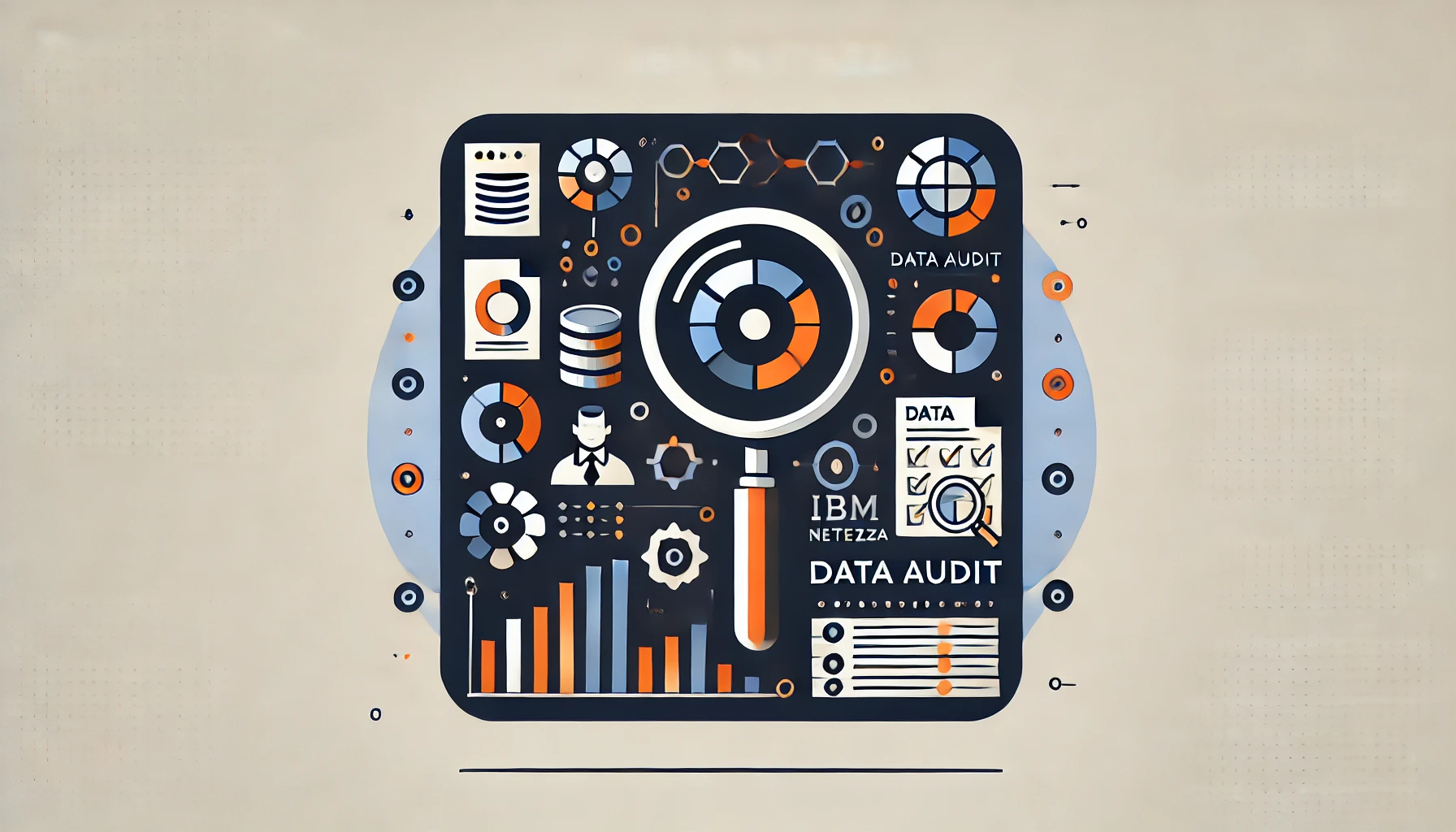
Introduction: Understanding the Value of Data Audits
In today’s increasingly interconnected world, organizations manage vast volumes of sensitive data, making robust data auditing an essential practice. Data audits are critical not just for regulatory compliance with standards like GDPR and HIPAA, but also for proactive threat detection and ensuring the overall integrity of operations. For example, in 2023, the average cost of a data breach reached $4.45 million globally—a stark financial incentive for implementing appropriate data security measures.
IBM Netezza: A Data Powerhouse
IBM Netezza is a high-performance data warehouse appliance designed for rapid analytics on large-scale data. It is particularly valued for its simplicity, scalability, and speed, making it a favorite among industries like finance, healthcare, and retail. By combining ease of use with powerful analytics capabilities, Netezza enables businesses to make informed decisions in real time.
Given its critical role in managing sensitive data, the importance of implementing effective data audit for IBM Netezza cannot be understated. While Netezza provides a foundational approach to data auditing, organizations should view its native auditing tools as a solid starting point rather than a comprehensive solution for extensive, long-term audit requirements.
Data Audit for IBM Netezza Using nzhistcreatedb
The nzhistcreatedb command offers a native method to establish an initial framework of implementing data audit for IBM Netezza. This tool facilitates the creation of a history database that logs query and audit activities, providing a basic yet essential mechanism for tracking data access and modifications. However, as organizations grow and their data complexity increases, they may need to supplement this approach with more advanced auditing solutions. The nzhistcreatedb command is a built-in Netezza tool for creating history databases. These databases collect and store history data in a structured format, simplifying the process of setting up necessary tables, views, and permissions.
Step-by-Step Example: Creating a Query History Database
Setting Up a Query History Database
nzhistcreatedb -d <dbname> -t query -v 1 -u <user> -o <owner -p <password>
Verification Steps
First login to your database:
nzsql -host <NZ_HOST> port <port> -u <user> -pw <password> -d <dbname>
Then execute \l to see the created history database. You should see something like this in the output:
DATABASE | OWNER
--------------+-----------
AUDITDB | AUDITUSER
SAMPLE | ADMIN
NZ_SYSTEM | ADMINViewing Tables in the Database
Only the tables that fall under your audit settings will populate with the appropriate data. For more details about these tables, refer to the IBM documentation on history views and tables.
\c <dbname>
\dt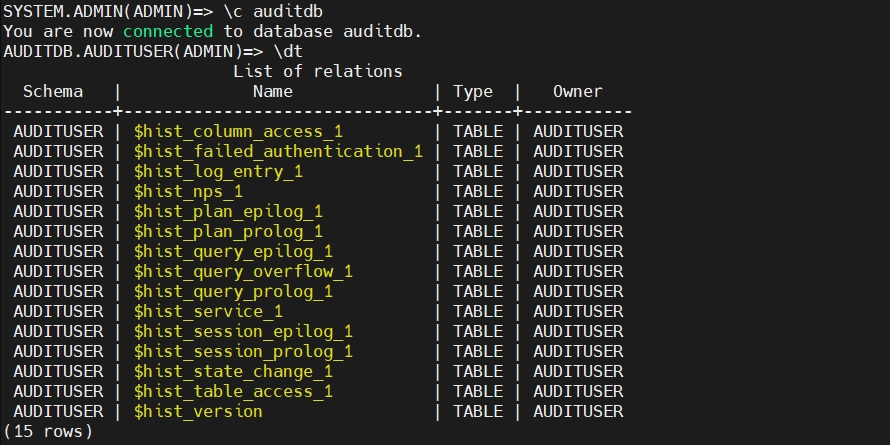
Configuring the History Database
We need to create and configure a HISTORY CONFIGURATION to collect data in the history database (Netezza's term for an audit database). This configuration specifies what to log. In this example, we'll simply configure it to log all queries. For more details, you can check the documentation on creating history configurations.
Example History Configuration:
CREATE HISTORY CONFIGURATION all_hist
HISTTYPE QUERY
DATABASE <dbname>
USER audituser
PASSWORD <password>
COLLECT QUERY, COLUMN
LOADINTERVAL 5
LOADMINTHRESHOLD 4
LOADMAXTHRESHOLD 20
STORAGELIMIT 40
LOADRETRY 0
VERSION 1;
SET HISTORY CONFIGURATION all_histPerforming a Test Query and Viewing Audit Logs
First, in order for settings to be applied, you'll need to restart your Netezza instance. Use the following commands to stop and start the source system. Make sure you run them as the nz user:
su - nz
nzstop
nzstart
After that, you can run a simple query on any table in the database. For example:
SELECT * FROM TEST.S1.CITY;`
To view the audit logs for table access, select specific columns for concise output. For example:
SELECT SESSIONID, DBNAME, TABLENAME
FROM AUDITDB.AUDITUSER."$hist_table_access_1";
Data Audit for IBM Netezza Using Native History Database Facility: Benefits and Limitations
Benefits of Using Netezza Audit History Database
Centralized Event Tracking: Captures and consolidates database activities like logins, queries, and table updates into a single repository for easy access and analysis.
Enhanced Accountability: Maintains a transparent record of user actions, helping to establish responsibility and deter unauthorized access or misuse.
Customizable Queries: Enables users to design specific queries for auditing purposes, tailored to meet organizational or compliance needs.
Regulatory Compliance Support: Provides the foundational data needed for compliance with regulations such as GDPR and PCI DSS, enabling structured audits.
Limitations of the Netezza Audit History Database
Storage Overhead: Large volumes of logged data can quickly consume storage space, requiring consistent management and cleanup efforts.
Performance Impact: Continuous logging activities may slightly degrade database performance, particularly during high-transaction periods.
Limited Real-Time Monitoring: Does not support live activity tracking or instant alerts, making it less effective for proactive security measures.
Complex Configuration: Requires technical expertise to initialize with commands like
nzhistcreatedband manage effectively.
Why You Should Choose DataSunrise when Implementing Data Audit for IBM Netezza
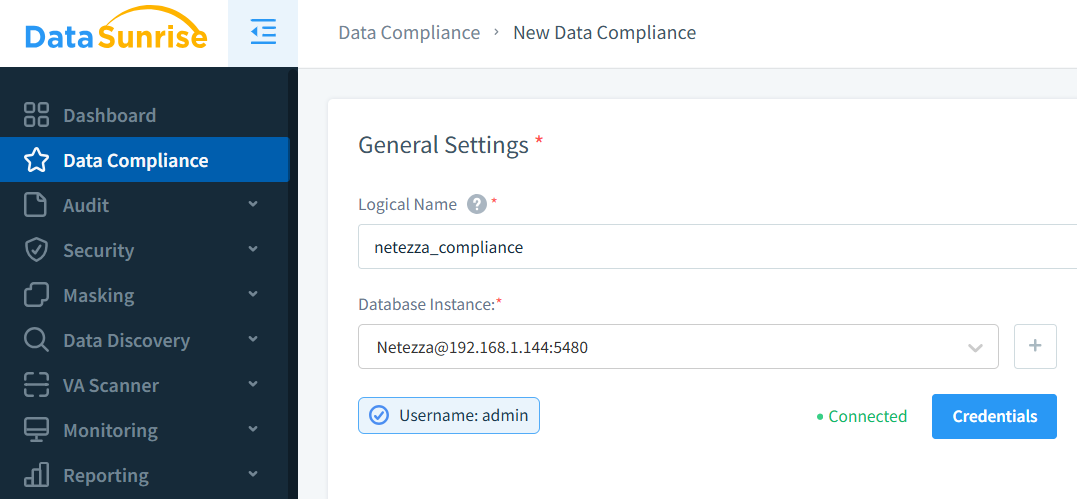
Netezza’s built-in history database provides a basic framework for auditing, but it can be complex and resource-intensive for organizations that require more streamlined, efficient solutions. Native auditing tools often demand extensive configuration, customization, and continuous management, which can become cumbersome as the organization’s needs evolve. This is where DataSunrise comes in. DataSunrise addresses these challenges, providing a more efficient and scalable approach to auditing Netezza databases with its specialized features.
Key Benefits of Data Audit for IBM Netezza with DataSunrise:
- Effortless Deployment and Configuration: DataSunrise offers multiple deployment modes and simplifies the auditing setup process with an intuitive interface that eliminates the need for complex configurations. This allows you to quickly deploy the tool and begin monitoring database activity right away.
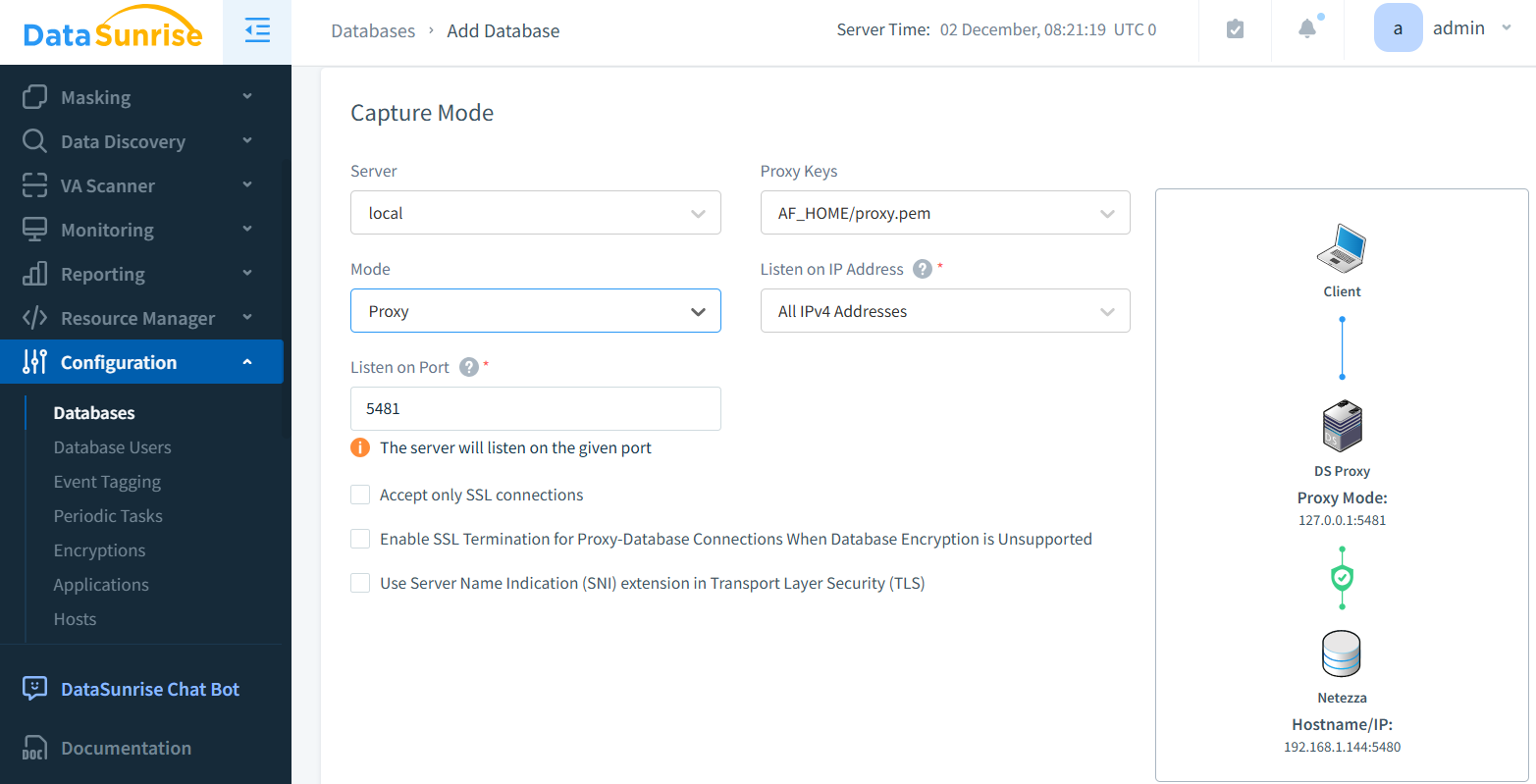
- Minimized Maintenance Effort: With DataSunrise, many routine auditing tasks, such as compliance reporting and real-time activity monitoring, are automated. This reduces the administrative burden and enables teams to focus on more strategic security initiatives.
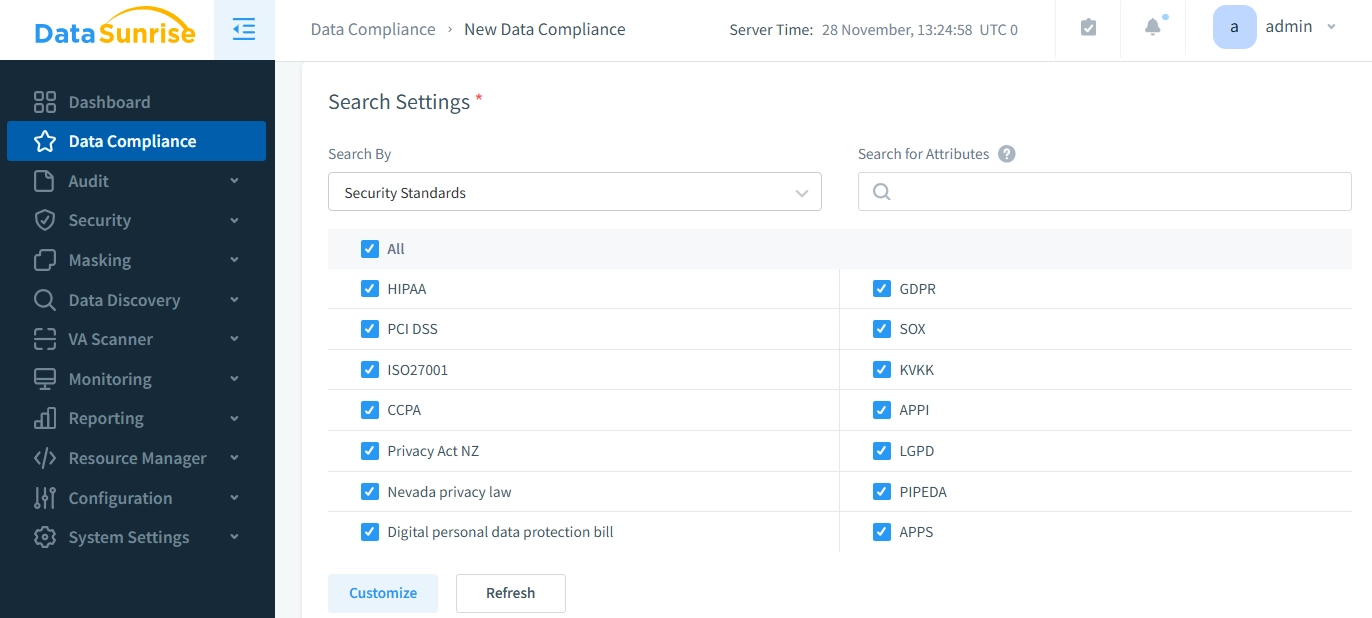
- Advanced Auditing and Security Features: While Netezza’s history database provides basic query tracking, DataSunrise offers more advanced features such as real-time alerts and notifications, customizable auditing rules, and behavioral analytics. These capabilities ensure that all activities are tracked and analyzed for potential threats.
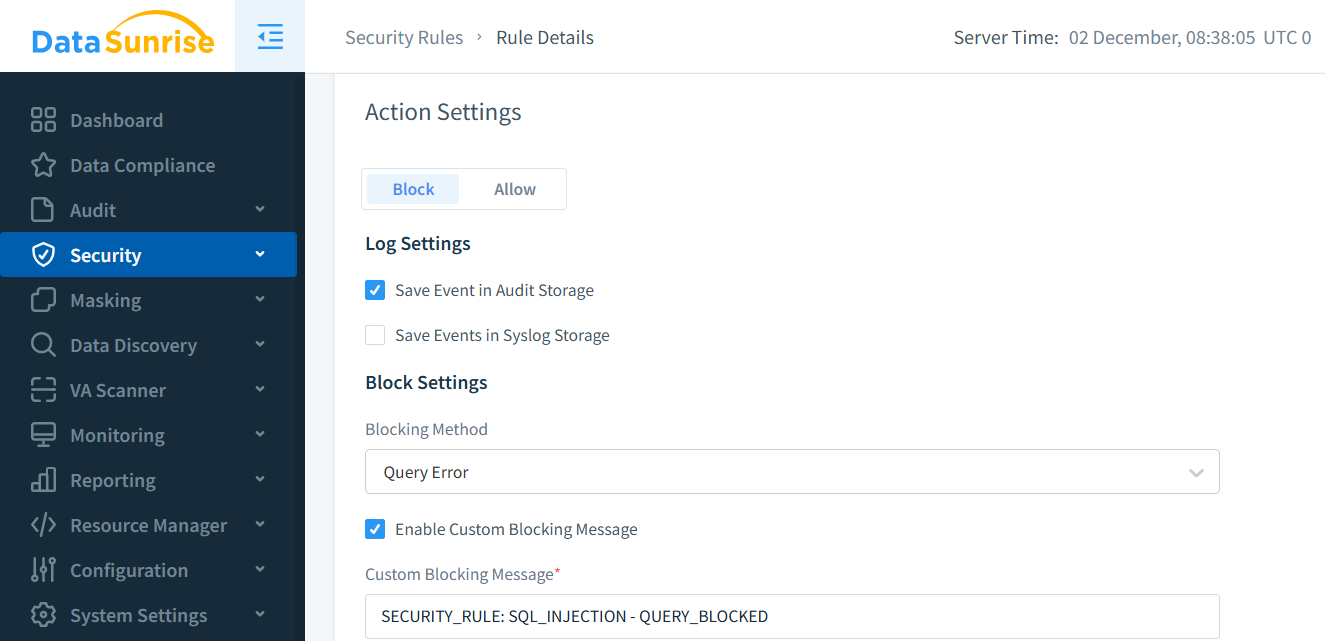
- Multi-Database Support: DataSunrise supports over 40 database platforms, including Netezza, making it an ideal solution for organizations with diverse database environments, allowing for consistent and unified audit rules and security policies across different systems.
Conclusion: Streamline Netezza Auditing with DataSunrise
DataSunrise, with its robust tools, enhances data audit for IBM Netezza by providing numerous advantages, including faster setup, reduced ongoing maintenance, and a broader feature set compared to native tools. With DataSunrise, organizations can efficiently manage their data audit and compliance requirements while ensuring that critical database security needs and regulatory standards are easily met.
Supporting over 40 database platforms, including Netezza, DataSunrise provides a comprehensive solution that grows with your organization’s evolving security and auditing needs, making it the ideal choice for database security and compliance. With its real-time database activity monitoring, advanced security features, and versatile deployment options, DataSunrise offers a scalable, user-friendly auditing solution.
Schedule an online demo today to experience how DataSunrise can enhance your data audit for IBM Netezza and security strategy.
